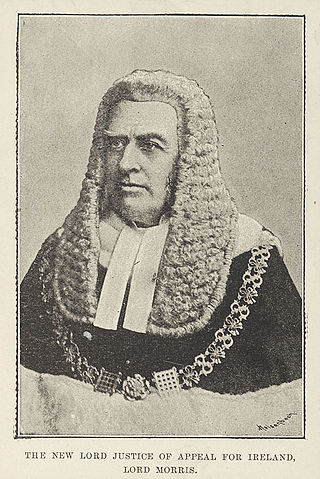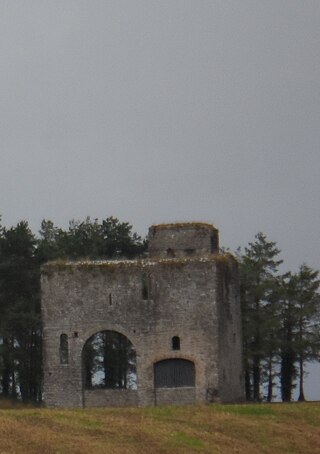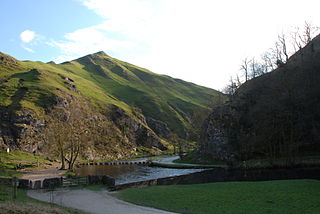
The Attorney-General for Ireland was an Irish and then United Kingdom government office-holder. He was senior in rank to the Solicitor-General for Ireland: both advised the Crown on Irish legal matters. With the establishment of the Irish Free State in 1922, the duties of the Attorney-General and Solicitor-General for Ireland were taken over by the Attorney General of Ireland. The office of Solicitor-General for Ireland was abolished at the same time for reasons of economy. This led to repeated complaints from the first Attorney General of Ireland, Hugh Kennedy, about the "immense volume of work" which he was now forced to deal with single-handedly.
James Butler, 4th Earl of Ormond was the son of James Butler, 3rd Earl of Ormond. He was called 'The White Earl', and was esteemed for his learning. He was the patron of the Irish literary work, 'The Book of the White Earl'. His career was marked by his long and bitter feud with the Talbot family.
The County Palatine of Tipperary Act 1715 is an Act of the Parliament of Ireland. This Act enabled the purchase by the crown of the Palatine Rights in County Tipperary given to the Earls of Ormond, later Dukes of Ormonde, over the preceding centuries. Prior to the Act, the dukes appointed the sheriffs and judges of the county and owned certain revenues from the county which would otherwise have gone to the Crown.

Richard Wogan was an Irish judge and cleric who held the office of Lord Chancellor of Ireland, and also served as a soldier.
Sir Robert Dowdall was an Irish judge who held the office of Chief Justice of the Irish Common Pleas for more than forty years. He is mainly remembered today for the murderous assault on him by Sir James Keating, the Prior of Kilmainham, in 1462.
Christopher Bernevall, or Barnewall (1370–1446) was an Irish politician and judge of the fifteenth century, who held the offices of Vice-Treasurer of Ireland and Lord Chief Justice of Ireland. He was deeply involved in the political controversies of his time, and was a leading opponent of the powerful Anglo-Irish magnate James Butler, 4th Earl of Ormond. His elder son Nicholas also held office as Lord Chief Justice, and his younger son Robert was created the first Baron Trimleston.
John Chevir or Chevyr was an Irish judge and politician of the fifteenth century. He held the offices of Lord Chief Justice of Ireland and Master of the Rolls in Ireland, and was also one of the first recorded Speakers of the Irish House of Commons.
Henry Mitchell (c.1320–1384) was an Irish judge of the fourteenth century. He was one of the first recorded holders of the office of Attorney General for Ireland, and was subsequently Chief Baron of the Irish Exchequer and Chief Justice of the Irish Common Pleas.
William Chevir, or Chevyr was an Irish politician and judge, whose career was marked by accusations of oppression and corruption.
Giles Thorndon was a senior official of the English Crown in the fifteenth century, who was noted for his long and loyal service to the House of Lancaster and for his troubled and unsuccessful career as Lord Treasurer of Ireland.
John Tirel, or Tyrell was a prominent judge and statesman in fourteenth-century Ireland who held office as Serjeant-at-law and Chief Justice of the Irish Common Pleas.
Peter Rowe was an Irish judge who held the office of Lord Chief Justice of Ireland intermittently between 1388 and 1397.

Thomas Dowdall, also spelt Dowdale, Douedall, or Dowedall, was an Irish barrister and judge who held the office of Master of the Rolls in Ireland.
Robert Dyke, Dyck or Dyche was an English-born cleric and judge who held high office in fifteenth-century Ireland. He was appointed to the offices of Archdeacon of Dublin, Chancellor of the Exchequer of Ireland, Lord High Treasurer of Ireland, and Master of the Rolls in Ireland, as well as holding several Church benefices.
Richard Finglas was an Irish barrister and Law Officer of the sixteenth century.
Thomas Snetterby was an Irish barrister, King's Serjeant and Crown official of the fifteenth century. He was remembered long after his death for giving his name to Snetterby's orchard near Kevin Street, Dublin.
Robert Fitzrery was an Irish Law Officer, landowner and judge of the fifteenth century. He was a gifted lawyer, and also suggests a shrewd and acquisitive man of business.
John Blakeney was an Irish judge of the fifteenth century, who served three times as Chief Justice of the Common Pleas.
Edward Dantsey or Dauntsey was a fifteenth-century Bishop of Meath, who also held high political office in Ireland, serving as Lord High Treasurer of Ireland and twice as Deputy to the Lord Lieutenant of Ireland. In a curious episode in 1426, he was wrongfully charged with theft, but acquitted.
John Gough, or John Gogh was an Irish barrister, judge and Crown official of the fifteenth century.



